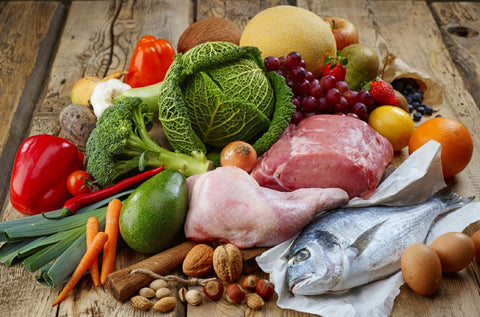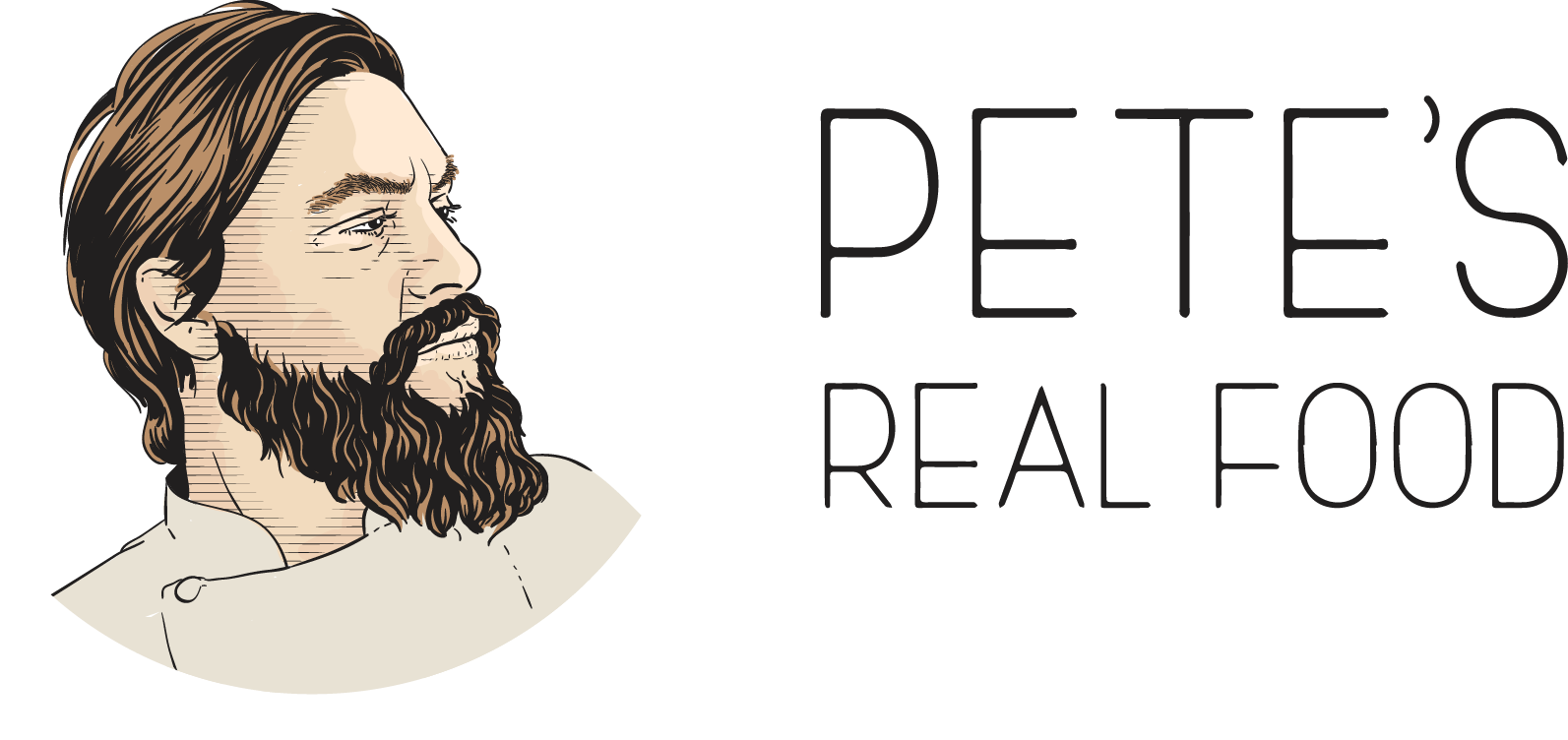What is a healthy diet? For many, this is a difficult question to answer.
March is Nutrition Month and a good time to review why a Paleo diet may be your best, most nutritious option!
There are no shortages of dietary options with each one claiming to be your healthiest choice. Although there is no one-size-fits-all approach to diet, or to health, for that matter, there are characteristics a healthy diet should have. It needs to be nutrient-dense and based on whole foods, not processed or refined foods. It needs to be nourishing and meet the goals, needs and challenges of the person eating it.
Rather than focusing on the details like the quantity of food, it makes much sense to look at the overall diet quality to determine whether a diet is healthy or not.

Diet quality deals with the types of foods you eat, rather than looking only at the amounts. A high-quality diet would, for example, differentiate between the carbohydrates in a slice of bread as compared to those in a sweet potato.
Nutrient-dense foods are prioritized over processed, nutrient-poor options. Nutrient-dense foods include the high concentration of micronutrients and amino acids that are necessary to thrive. Research has shown that macronutrient quantities (amounts of protein, fats and carbohydrates) matter less than overall quality and nutrient density of a diet for both health and weight loss.
Some of the foods with the highest nutrient density include:
- Organ meats are loaded with fat soluble vitamins (A, D, E, and K), Vitamin B12, folic acid, iron, and copper
- Beef, lamb, veal and wild game are rich sources of Omega 3 fatty acids, amino acids (what make up protein), B vitamins, Vitamin E
- Bone broth provides gelatin/collagen, calcium/magnesium, sulfur, trace minerals.
No need to make it – get yours here >>>>
- Fish and seafood boast omega 3 fatty acids, Vitamin B12, selenium, vitamin D, zinc (especially high in oysters!), iron
- Vegetables are nutrient powerhouses with vitamins C, A, K, antioxidants and fiber
- Eggs contain vitamins A and D, choline, selenium and lutein
- Dairy is high in Omega 3 fats and fat-soluble vitamins (A, D, E, K).
You could add the following to this list too
- Fermented foods
- Herbs and spices
- Nuts and seeds
- Cacao
And naturally occurring fats help with the absorption of other foods.

This list might seem very familiar if you have been following a Paleo-type diet for any length of time
The Paleo ‘Fad’
A fad diet is defined as 'Any of a number of weight-reduction diets that either eliminate one or more of the essential food groups, or recommend consumption of one type of food in excess at the expense of other foods. Fad diets rarely follow sound nutritional principles for weight loss, which focus on ingesting fewer calories and/or consuming more energy through exercise; fad diets are generally not endorsed by the medical profession
The premise of a Paleo lifestyle emphasizes the fact that the way you eat and how you move have consequences that are relevant to your health.
The Paleo diet is actually one of the few diets that is based on science.
Over the past few years, there has been an increasing amount of studies linking Paleo-based diets with reducing many chronic conditions including reduced inflammation, blood pressure, lipid profile and glucose tolerance, non-alcoholic fatty liver disease, and weight loss,
A Paleo lifestyle encourages finding the highest quality, most nutritious food you can. Grass-fed meats, wild-caught fish, organic fruits and vegetables. If these are unavailable or not within your budget, there are still ways to adhere to Paleo principles without letting perfection be the enemy of the good.

The Paleo Diet Is Your Healthiest Option
The Paleo diet is, by default, nutrient dense and makes a lot of sense:
You get to eat the same types of foods people used to eat about 100,000 years ago: meats, vegetables and fruits. No grains, no processed stuff, no sugar, no added sugar – the list goes on.
This also applies to preparation and cooking: you either eat it raw, grilled, baked or steamed, and avoid deep frying (where would hunter gatherers be able to process the oils and the tools necessary to deep-fry stuff anyway?).
The Paleo diet proposes that agriculture, which humans developed about 10,000 years ago, provided for quantity at the cost of quality: less nutrition, more calories and ‘a full belly’. Modern day humans are not that different from humans with approximately 90% of the evolution of the modern-day human occurring before the Neolithic era. It is clear we’ve evolved to work well with it, otherwise we would not be here today discussing these benefits. Even observing modern-day hunter gathering societies it becomes obvious that this lifestyle leaves them tall, healthy, fit and lean.
The Paleo diet works for the entire family. Even though there is a widespread misconception that ‘women did the gathering’ and ‘men did the hunting’, there are societies where the hunting is done by both genders. Furthermore, meals were shared by men, women and children, young and old.

When following a Paleo diet, the majority of the foods you consume provide high nutritional benefits for a relatively low caloric intake. Sugar, for example, provides little to no nutritional benefits whilst providing a lot of calories, all of which are easily stored as fat. There is also no need to diet through the effort of weighing your food, calculating calories and macronutrients and scheduling meals. You simply do your research for some adequate food sources and periodically stock up (depending on spoilage etc.). there is no need to worry about too much else, you eat when you’re hungry, as much as you want, day or night.
Order some Pete’s Paleo meals for when time is scarce, choices are limited or you want chef prepared meals ready when you are.
Order this week’s menu here>>>>>>>>
When eating real, whole, nutrient dense foods it is extremely challenging to eat more than you need or over-consume because most of the food you are eating provides the nutrition your body needs without overloading your calorie intake. Common-sense dictates that the Paleo Diet offers really great nutrition at adequate calorie levels, so you can eat to satiety and remain satiated longer. The Paleo Diet it clearly provides a rounded and adequate nutritional input, there’s indisputable science behind this.
The Paleo diet is the most nutrient dense diet.
This is not because ancient humans didn’t eat grains (research shows they might have in small quantities). It is not because the human genome has not evolved (we always have and will continue to evolve, however slowly), nor is it because the diet encourages excessive meat consumption (if anything, it encourages excessive vegetable consumption). It’s not simply because the Paleo Diet teaches your body to use stored fat for energy rather than sugar. Nor is it just because it’s very difficult to overeat on the Paleo Diet, which almost always leads to weight loss. It is also not because it can help controlling and managing health conditions, chronic illness and autoimmune disease.
The Paleo diet is your best option for a number of reasons, the most important being something that has nothing to do with anthropology or physiology:
The Paleo diet is your best choice because its premise is simple to understand, foods are by default nutrient dense, it makes logical sense, removes the need for counting calories, and removes willpower from the equation. Similar to other lifestyle habits, the pretty good routine you follow is better and produces superior results than the perfect one you don’t. The Paleo Diet may be modified and adapted to suit your needs, goals and preferences. It works and is easy to follow.
Paleo enthusiasts tend to look at their Paleo lifestyle as more than simply a diet, they think in terms of paleo insights: What can we learn from the foods we evolved with? Paleo is incredibly useful as a critique of ultra-processed food which no longer relies on anything like the fresh and original food ingredients that even our recent ancestors ate in abundance. Paleo thinking leads to efforts to raise livestock in a way that’s somewhat akin to the system they evolved with. This means on pasture, for example and not force-feeding them grains and beans in barns. Likewise, it leads logically to more organic methods of growing, and to much wider ranges of foods that are eaten daily, as was common when people foraged for food.

In North America, we tend to think in terms of diets, calories and macronutrients, which are only partially responsible for what we eat. Paleo does not get caught in that trap. The Paleo diet encourages you to look a little wider and deeper and think of food systems. At this level, Paleo is not only the most nutrient dense diet for you, but a lifestyle and philosophy that betters your life and the lives of generations to come.
Regardless of your adaptations and modifications to your Paleo diet, your main goal should always be to focus on nutrient density. Humans can thrive on a variety of food combinations, but not on a diet that’s deficient in the vitamins and minerals your body needs. Fill your plate with Paleo-friendly, nutrient-dense, whole foods, and enjoy!
This is how you will survive and thrive. Humans have done so for 2.5 million years

